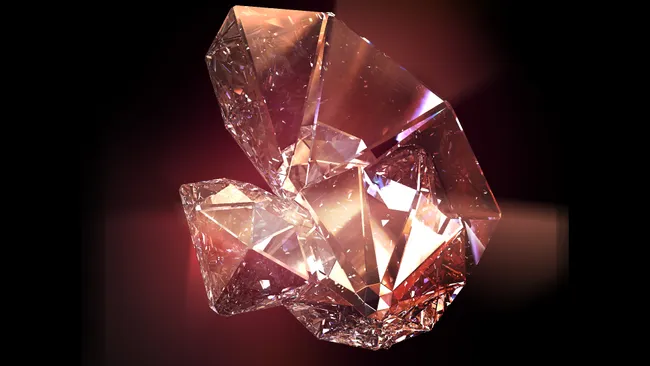Our Terms & Conditions | Our Privacy Policy
Scientists have finally made an elusive meteorite diamond
Scientists have created the first sizable meteorite diamond — also known as lonsdaleite or hexagonal diamond — a material predicted to be even harder than the diamonds normally found on Earth.
The high-pressure, high-temperature technique created tiny disks of this ultrahard diamond which could ultimately replace conventional diamonds in applications such as drilling tools and electronics, the scientists reported in the journal Nature. Diamonds hold the record for the world’s hardest naturally occurring substance. Each carbon atom in the infinitely repeating molecular structure forms four equal-length bonds to other carbon atoms, each separated by a 109.5 degree angle, to create an endless array of perfect tetrahedra. Viewed from the side, this structure appears to contain three repeating layers of carbon atoms (labeled A, B, and C), and this gives diamond what crystallographers call a face-centered cubic crystal structure.
In the 1960s, however, a subtly different structure of diamond was proposed, with small impure crystals of this structure subsequently discovered in the Canyon Diablo meteorite, which crashed in the Arizona desert around 50,000 years ago. Unlike in cubic diamond, this form contains two different bond lengths — one slightly longer than in normal diamond and one slightly shorter. The carbon atoms are still organized into endless planes of tetrahedra. But this time, when viewed from the side, the structure contains only two repeating layers (labeled A and B). This slight shift in the carbon layers gives meteorite diamond a hexagonal structure, which scientists theorize should boost the solid’s hardness by 58%.
But preparing samples of this hexagonal structure large enough to analyze has been challenging. What’s more, the presence of other contaminating forms of carbon in the original meteorite sample — including graphite, cubic diamond and amorphous carbon — led many to doubt whether hexagonal diamond exists at all.
Inspired by the Canyon Diablo meteoric fragment, Wenge Yang and colleagues at the Center for High Pressure Science and Technology Advanced Research in Beijing, sought to reproduce the intense conditions of an impact with Earth in the lab, developing a high-pressure, high-temperature synthesis using a diamond anvil cell, a piece of equipment that squashes a sample between two flattened surfaces made of diamond. Starting from another form of carbon, purified graphite, they slowly and carefully compressed the material, fixing the shifted atoms in place with targeted heat from a laser.
Images are for reference only.Images and contents gathered automatic from google or 3rd party sources.All rights on the images and contents are with their legal original owners.



Comments are closed.